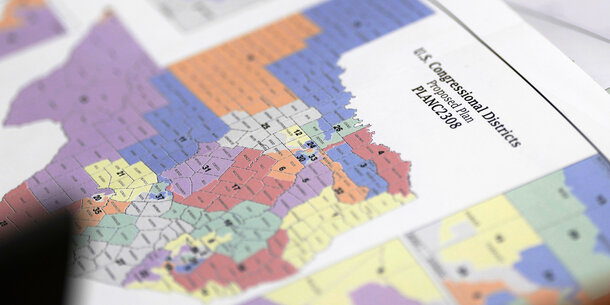August 16 is a big day for democracy. But it might not be a good day for democracy. That’s when the Census Bureau releases the data that states will use in the redistricting process. The maps they draw will be used for the next 10 years. And in many states, what that means is the gerrymandering barbecue is about to begin. The unchecked partisan and racial gerrymandering that we expect to see won’t just tilt for one party — it will also serve to squelch the voices of people of color.
As my colleague Michael Li explains in the Washington Post, federal legislation is urgently needed to stop the map grab and protect the integrity of the redistricting process. Based on current requirements and past practices, 32 states are likely to have new maps in place by early next year, more than half of them by this fall.
Gerrymandering has been around since the founding, when Patrick Henry tried to draw Virginia’s very first congressional map to prevent James Madison from winning a seat. Both parties do it when they can. And in the 21st century, with the help of computer algorithms combined with commercially available consumer data, it operates on a far vaster scale.
For example, Pennsylvania’s 2010 redistricting ensured a Republican grip on 13 of the state’s 18 congressional districts, despite elections where Democrats got more votes for Congress statewide. A Brennan Center analysis estimated that the last round of gerrymandering landed the GOP an additional 15 to 17 House seats in all. And partisan gerrymandering disproportionately affects communities of color, especially in the South. Because of residential segregation, it’s easy to either combine or split apart those communities for political effect.
We have also seen disturbing redistricting proposals from conservative extremists who want to end the long-standing practice of counting every person when creating state and local legislative districts. Instead, they would exclude children and noncitizens. Our new report projects the consequences of counting only adult citizens for state-level political districts in Georgia, Missouri, and Texas, three demographically different states where this apportionment method could take hold.
The results: Latino, Asian, and Black communities would bear the brunt of representational losses, as urban and suburban areas that tend to be younger and more diverse are deprived of their fair share of political power and public resources.
On the federal level, the Supreme Court abdicated the judiciary’s responsibility for ensuring fair maps in a wrongheaded 2019 decision. But Chief Justice John Roberts practically sent Congress an engraved invitation to address the problem, writing, “The Framers gave Congress the power to do something about partisan gerrymandering.” He even cited the For the People Act as an example.
Members must now heed that (perhaps unintentional) call and pass legislation to ban this antidemocratic practice. They should also make it easier to challenge discriminatory maps in court and require meaningful transparency.
And it has to happen immediately. The longer it takes to pass federal legislation, the harder it will be to fully implement, since once maps are drawn they are difficult to change. The clock is ticking.



